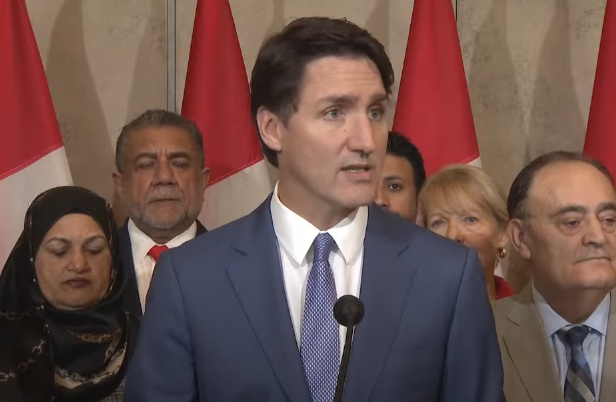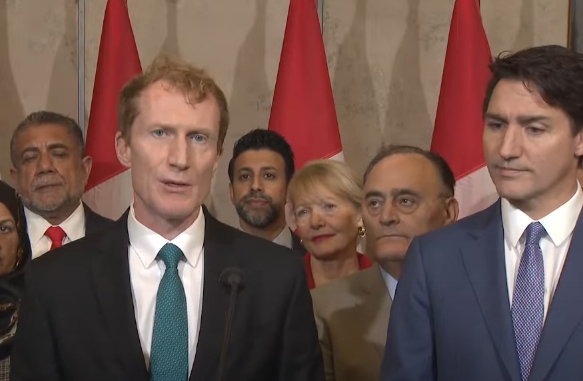Canada is reassessing its targets for admissions of permanent and temporary residents, aiming for a more balanced approach to immigration as the government of Canada cuts immigration by 20%.
Three days ago, The Honorable Marc Miller, Minister of Immigration, Refugees and Citizenship, introduced the 2025–2027 Immigration Levels Plan to foster sustainable growth and ensure well-managed population levels. This innovative plan marks a significant step forward, as it establishes controlled targets for both temporary residents, including international students and foreign workers, and permanent residents. By prioritizing balanced growth, the plan seeks to create a more effective and adaptable immigration system for Canada’s future.
Canada Immigration
Immigration plays a critical role in the economic success and growth of our nation. Following the reopening of Canada after the pandemic, the demand from businesses for workers significantly exceeded the available labor supply necessary for their recovery. Consequently, this disparity highlighted the urgent need for effective workforce planning and recruitment strategies. In response, we implemented strategic measures to attract some of the world’s most talented individuals to study and work in Canada, facilitating their swift integration into the economy. This approach expedited economic recovery, averted a potential recession, and reinforced Canada’s labour force.
read about canada announces post-graduation work permit eligible programs

This transitional-level plan addresses our country’s housing, infrastructure, and social service pressures, promoting long-term economic and social prosperity through immigration. It offers a comprehensive approach to welcoming newcomers while maintaining the integrity of our immigration programs and ensuring their success. Canadians expect a well-managed immigration system from the Government of Canada.
The Immigration Levels Plan
The Immigration Levels Plan serves as the government’s official guide to its immigration strategy.
Each year, this plan sets targets not only for the upcoming year but also for the following two years. In the immediate year, the team typically finalizes the targets, while they may adjust the targets for the second and third years based on evolving circumstances.
While there has been a reduction in the targeted number of new permanent residents, it’s encouraging to see that the 2025 targets still exceed Canada’s pre-pandemic goals.
However, the plan could benefit from including targets for all foreign nationals who may be residing in Canada for extended periods. This could encompass asylum seekers and parents or grandparents on super visas, along with seasonal workers. By broadening the focus, the plan could better reflect the diverse contributions of all individuals living in Canada.
Video of the Announcement
Permanent Resident Targets
On 24 October, the government issued the Immigration Levels Plan, which detailed the forthcoming reductions in targets for permanent resident admissions over the next three years. In the 2024-2026 Immigration Levels Plan, the government has revised its immigration targets as follows:
- For 2025, the target has been set at 395,000, a reduction from the previously established goal of 485,000 for 2024. The initial target for 2024-2026 was 500,000.
- For 2026, the target has been further adjusted to 380,000, also a decrease from the 500,000-target outlined in the plan.
- The projection for 2027 stands at 365,000.
While policymakers lower the overall immigration numbers, they place a notable increase in emphasis on economic immigration. The economic immigration targets for 2025 have seen a modest decline of only 17%, falling from 281,000 to 232,000.
Over 40 percent of economic immigrants are anticipated to originate from temporary residents currently residing in Canada. The government has outlined the following distribution of permanent resident admissions for the forthcoming three years:
| Immigration Category | 2025 | 2026 | 2027 |
| Economic Immigration | 232,150 (215,000 – 256,000) | 229,750 (214,000 – 249,000) | 225,350 (207,000 – 246,000) |
| Family Reunification | 94,500 (88,500 – 102,000) | 88,000 (82,000 – 96,000) | 81,000 (77,000-89,000) |
| French-speaking Admissions outside of Quebec | 8.5% (29,325) | 9.5% (31,350) | 10% (31,500) |
| Refugees, Protected Persons, Humanitarian and Compassionate, and Other | 68,350 (63,500 – 78,000) | 62,250 (56,000 – 71,000) | 58,650 (54,000 – 66,000) |
| Total PR admissions and ranges | 395,000 (367,000 – 436,000) | 380,000 (352,000 – 416,000) | 365,000 (338,000 – 401,000) |
To enhance the quality and integrity of our temporary resident programs, a series of thoughtful changes have been implemented over the past year. These include a cap on international students and updated eligibility criteria for temporary foreign workers. These adjustments aim to ensure that we continue to attract top talent while aligning with our long-term economic objectives.
By making these changes, we are providing provinces, territories, and stakeholders the opportunity to better align their resources. This will facilitate sustainable population growth and encourage institutions to play an integral role in welcoming newcomers more effectively.
Other measures from the 2025–2027 Immigration Levels Plan include the following:
- Transitioning temporary residents currently in Canada as students and workers to permanent residency is a priority.
- In 2025, these individuals are expected to account for over 40% of total permanent resident admissions. They are skilled, educated, and already integrated into Canadian society. Because they are established with housing and employment, they will continue to support the workforce and economy without placing additional demands on social services.
- Emphasizing long-term economic growth and important labor market sectors, such as health and trade.
- Permanent resident admissions in the economic class are projected to reach 61.7% of total admissions by 2027.
- Enhancing Francophone communities outside of Quebec and promoting their economic prosperity. Of the overall permanent resident admission targets, Francophone immigration will represent
- 8.5% in 2025
- 9.5% in 2026
- 10% in 2027
Through this plan, we are, therefore, using our existing programs so that everyone—including newcomers—has access to the well-paying jobs, affordable homes, and social services they need to thrive in our beautiful country.

Quick Facts
- As of April 2024, Canada’s population has reached 41 million, demonstrating significant growth in recent years. Notably, immigration has contributed to nearly 98% of this increase in 2023, with 60% of the growth attributable to temporary residents.
- The strategic plan to regulate population growth following the post-pandemic surge is designed to foster sustained GDP growth and facilitate an acceleration in GDP per capita growth throughout the period from 2025 to 2027. Additionally, this approach aims to enhance housing affordability and reduce the unemployment rate.
- Reducing the number of immigrants will help ease some pressure on the housing market, with the gap in housing supply expected to decrease by approximately 670,000 units by the end of 2027.
- The temporary resident targets outlined in the levels plan do not include short-term visitors or seasonal workers, as these groups are not included in annual population estimates. The targets refer to the number of net new temporary residents entering Canada each year.
- The Government of Canada has implemented measures to manage the influx of temporary residents, uphold the integrity of our immigration system, and protect vulnerable populations including:
- Tightening eligibility requirements for:
- Temporary Foreign Workers.
- Post-Graduation Work Permits.
- Work permits for spouses of international students and temporary foreign workers.
- Reforming the International Student Program.
- Tightening eligibility requirements for:
According to Statistics Canada, immigrants make significant contributions to every sector of Canada’s economy, particularly in health care, construction, and transportation. In the residential construction sector, immigrants are especially important, representing 23% of all general contractors and residential builders.







